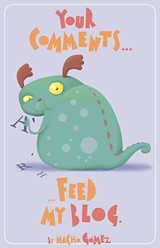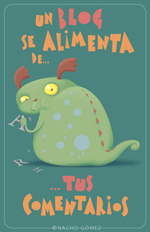Esta
actividad es una que desarrollé como recurso para profesores de inglés como idioma
extrajera. Sin embargo, se traslada con facilidad a una clase de teatro.
Para: grupos de tamaño mediano de adolescentes y/o adultos
Materiales: una variedad de fotos de caras; fotos de casas,
coches, muebles (opcionales)
Tiempo requerido: Mínimo una clase pero se adapta fácilmente para
usarlo en varias clases o incluso como proyecto de varias semanas
Favorece/practica
- El desarrollo de personaje
- Técnicas de improvisación
Y profundizando un poco más, sirve para:
- Explorar los conceptos del conflicto, la tensión dramática, el suspense etc
- Conocimientos del guión (puntos de giro; estructura básica)
¿Cómo?
Se trata de construir entre todos – a base de
improvisación – una especie de culebrón colectivo y dinámico que irá tomando una
forma imprevisible según lo va dirigiendo la clase
Primera etapa:
Se empieza por sacar un gran número de fotos de diversas
caras sacadas de revistas, de Google Images o de donde sea. Es un poco de curre
por parte de la profesora, pero merece la pena tener una variedad de caras (de
diferentes edades, razas y grados de ‘belleza’).
Sacar las fotos y hablar entre todos de las
sensaciones que da cada una. ¿Da sensación de persona buena? ¿Mala? ¿Maja? ¿Gruñón?
Se puede hablar de la relación entre ‘el malo’ (o el bueno) de la obra y su físico
etc. ¿Quién tiene la mejor cara de… joven protagonista; madrasta retorcida; de
sabio profesor etc etc? (Estamos empezando a hablar de cómo construir un
personaje desde lo físico pero tampoco se trata de profundizar demasiado en
este momento. Pinceladas y que la actividad sigua…)
Entre la clase, se hace una selección de fotos, que
se puede hacer de varias maneras: cada alumno elige 2 o 3 que le llama la
atención; o una que le gusta y uno que le inquieta etc. Está bien evitar que
los alumnos se identifiquen demasiado con una foto en especial (por eso se
elige más que uno) y que haya una selección amplia de fotos que se irá
reduciendo poco a poco.
Ahora, en parejas o de manera individual, el grupo
tiene que desarrollar una pequeña descripción de sus ‘personajes’. ¿Cómo se
llama? ¿Qué edad tiene? Si su vida ha sido dura o privilegiada… ¿En qué trabaja
(si es que lo hace)? Y sobre todo, como es su carácter: gruñón; optimista;
cauto; alegre etc.¿
Como profesor, es posible que haya que guiarles un
poco antes de empezar y sobre todo, acordarles que nos estamos basando ahora en
lo estrictamente personal de cada personaje.
No nos interesa todavía saber, por ejemplo, con quién viven o si tienen hijos.
No nos interesan los enlaces (relaciones) con los demás. De momento.
Cuando han tenido tiempo para meditar estos temas,
se reúne al grupo para brevemente ‘presentar’
a todos los personajes y compartir la información entre todos. Si en algún momento,
alguien cree que tiene un personaje que podría ser relacionado de alguna manera
(pareja sentimental; familiar; amigo; enemigo; o simplemente una sensación que ‘se
pegan’ de alguna manera) con el personaje siendo presentado, se levanta la mano
y explica a todos como es su personaje y porque piensa que puede estar
relacionado de alguna forma con el otro. (Esto abre dialogo sobre la atracción físico;
si los opuestos atraen etc. pero intenta que no se define todo en términos románticos;
evitar las etiquetas, de momento, y trabajar con ‘sensaciones’. En su libro “Las
Familias y Como Sobrevivir a Ellas, el actor John Cleese y el psicólogo Robin
Skynner describen un experimento fascinante sobre este tema (“the Family
Systems Exercise”) que merece la pena leer al tratar de la información increíblemente
detallada y exacta que transmitimos todos incluso antes de haber hablado. (La
seeción relevante está incluida después de esta entrada, pero en inglés)). Si
el ‘dueno’ del personaje original está de acuerdo con ‘relacionarse’ con este
otro personaje, se sientan juntos. NO SON PAREJA SENTIMENTAL así que se puede
llegar a agruparse 3 o 4 personas. Otros personajes se quedarán solos (como en
la vida misma L ).
No hace falta agrupar a todos los personajes – se puede
descartar algunos – pero sí que puede haber un grupo de ‘inadaptables sociales’
que, como profesor, conviene guardar para más adelante (ya que son personajes imprevisibles
que pueden entrar en juego más adelante para ‘dar chispa’ y cambiar el rumbo de
la acción).
Por último, se ajuntan los grupos para hablar de las
relaciones entre sus personajes. Que sean (al ser posible) imaginativos a la
hora de definirlos (que tenemos familias, jefes, amigos etc a parte de
parejas). Aquí existe la posibilidad de expandir la clase hacia la
improvisación – de desarrollar diálogos sobre los primeros encuentros de los
personajes o de mostrar una conversación ‘típica’ entre ellas o de hablar de la
diferencia entre la relación de n jefe/empleado y unos novios etc. Pero,
de momento, lo dejamos. Mañana más....
'The Family Systems Exercise' from Families And How To Survive Them
But the most
dramatic piece of evidence for it is called the Family Systems Exercise. The
first time I saw this was in 1973, when some visiting American family
therapists demonstrated it to us. We've now incorporated it into our training
methods at the Institute of Family Therapy.
John:What's the exercise for?
Robin:its purpose is to show what lies
behind the way that couples pick each other out across a crowded room! And it
demonstrated to me more clearly than I'd ever realised how unconscious
attractions work, and what they're about.
John:You mean it shows how we pick each
other without knowing anything about each other?
Robin:Yes. The trainees do this exercise
very early on - in fact ideally when they're still complete strangers. They're
put together in a group and asked to choose another person from the group who
either makes them think of someone in their famliy or, alternatively, gives
them the feeling that they would have filled a `gap' in their family. And -
here's the interesting bit - they're not allowed to speak at all while they're
choosing. They just stand up and wander around looking at all the others. When
they've all chosen someone, that is when they're in pairs, they are told to
talk together for a time, to see if they can find out what made them pick each
other. They're encouraged to compare their family backgrounds. Next, each
couple is asked to choose another couple, in order to make foursomes. And then,
each foursome is asked to form itself into a family of some kind, agreeing with
each other what role in the family each person will take. Then they talk
together about what it was in their fanidy backgrounds that led to their
decisions. And finally, they report to the whole group what they've discovered.
John:Which is what?
Robin:That they've somehow, each one of
them, picked out three people whose families functioned in very similar ways to
their own.
John:How do you mean `functioned in very
similar ways'?
Robin:Well, they'll find that all four of
them are from families where there was difficulty in sharing affection; or perhaps
in expressing anger, or envy; or where there had a lot of near-incestuous
relationships; or where people had always been expected to be optimistic and
cheerful. Or they might discover that all four of them had fathers who were
away from home during the years when that mattered a lot to them; or that their
families had suffered some big loss or change of a similar kind when they were
all at similar ages.
John:Couldn't this just be because they are
looking for things they have in common?
Robin:That's not really a good enough
explanation for the number of connected similarities they always find. I know
it may sound unconvincing to anyone who hasn't actually tried it, but it's
quite uncanny when you experience it for yourself.
John:But what about all the `wall-flowers'?
How do you explain the ones who don't get chosen?
Robin:Well, funnily enough, it was the
`wall-flowers' that clinched the argument for me - finally convinced me that
there was something extraordinary going on. The very first time that I was in
charge of putting about twenty trainee family therapists through this exercise,
I suddenly got worried that the ones who came together last would feel they
were all rejects. So, when I asked the groups to report on their experiences -
the family similarities they'd discovered - I put off asking the `wall-flower'
group till last, as I was rather dreading what their reaction would be. But
they were just as fascinated as the rest of the trainees. They had discovered
that they had all been fostered, or adopted, or brought up in children's homes.
They had all felt rejected early in their lives, and had somehow, in this
exercise, unerringly picked each other out!
John:So every time this exercise is staged,
you find the trainees choose each other because of the remarkable number of
similarities in their family backgrounds - in their family histories, and in
their families' attitudes.
Robin:Right.
John:So how are the reasons why they choose
each other related to the reasons why we fail in love with each other?
Robin:Fundamentally. You see, there are lots
of reasons for a couple getting together, but most of them are easy to
understand. One of the pioneers of marital therapy in the fifties - Henry Dicks
- boiled them down to three main categories. First, social pressures like
class, religion and money, second, conscious personal reasons like good looks,
shared interests, things you know you're picking someone for; and third, these
unconscious attractions that everybody calls `chemistry'.








No hay comentarios:
Publicar un comentario